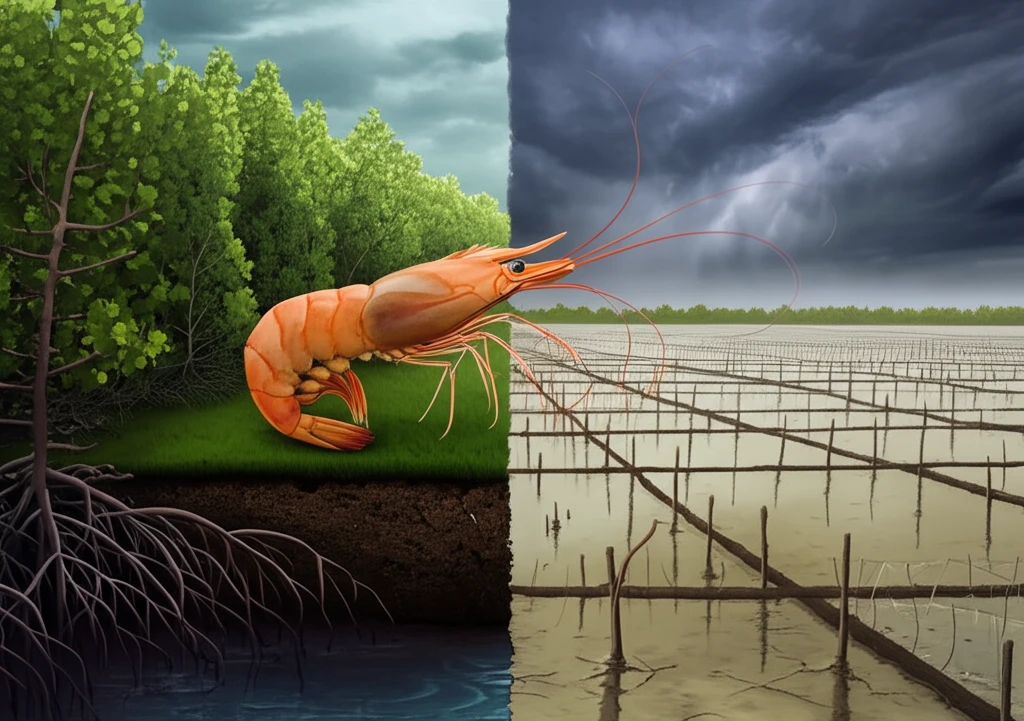
Is Shrimp Farming Worth the Cost? Unveiling the Environmental Impact in Bangladesh
"A deep dive into the hidden costs of shrimp aquaculture and its impact on coastal communities and ecosystems in Chittagong and Cox's Bazar."
For decades, shrimp has been a star export for Bangladesh, boosting the economy and creating jobs. But behind the glossy export figures lies a troubling truth: the rapid expansion of shrimp farming is taking a heavy toll on the environment, particularly in the coastal regions of Chittagong and Cox's Bazar. This isn't just an environmental issue; it's a socio-economic one, impacting the livelihoods and well-being of local communities.
The heart of the problem lies in the way shrimp farming is often practiced. Coastal wetlands and agricultural lands are converted into shrimp farms, leading to the destruction of vital mangrove forests and disrupting the delicate coastal ecosystem. These environmental costs, often overlooked, have far-reaching consequences, from reduced agricultural opportunities and income for farmers to increased vulnerability to natural disasters.
This article delves into the environmental costs of shrimp farming in Bangladesh, drawing from a study conducted in the coastal areas of Chittagong and Cox's Bazar. We'll explore the tangible and hidden costs, examine the potential for sustainable aquaculture, and discuss policy recommendations to mitigate the environmental impact while preserving the economic benefits of this important industry.
What Environmental Costs are Associated with Shrimp Farming?

Shrimp farming, while economically beneficial, triggers a cascade of environmental issues that extend far beyond the immediate vicinity of the farms. Understanding these costs is crucial for developing sustainable practices and policies. Let’s examine the significant environmental impacts:
- Increased coastal erosion and vulnerability to natural disasters.
- Loss of biodiversity and decline in fish populations.
- Disruption of the natural food chain and ecosystem services.
Shrimp Farming: Balancing Profit and Planet
The future of shrimp farming in Bangladesh hinges on finding a balance between economic benefits and environmental sustainability. By acknowledging the true costs of shrimp production and implementing policies that promote responsible practices, Bangladesh can ensure that this vital industry contributes to the nation's prosperity without sacrificing the health of its coastal ecosystems and the well-being of its communities.
